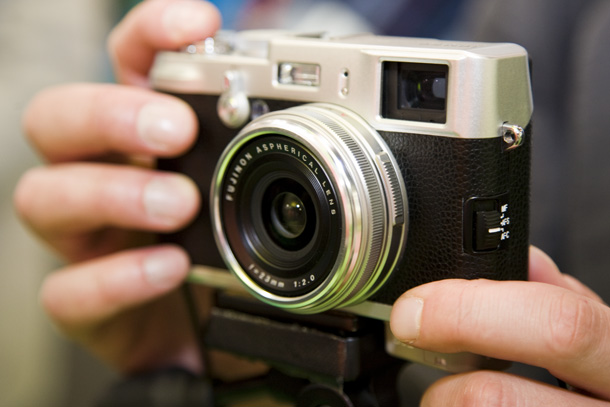Why you can trust TechRadar
Fuji X100: Verdict
It's clear that Fujifilm has put a tremendous amount of thought into the X100 and in many ways it's exactly what many people want: a small-form, large-sensor camera, with a fast optic and all encased in a beautiful and solidly-built body.
Whereas similar models have essentially been digital cameras with the influence of a classic design, the X100 turns things the other way round and has the design very much as the priority.
That's not to say that what's on the inside is in any way substandard, but much of the draw of the X100 is its undoubtedly its aesthetic quality and superior craftsmanship.
Its design is, however, also behind many of its operation issues; the exposure compensation dial which all too easily turns out of position; the loose menu pad dial and small menu button; the indicator lamp which is easily obstructed by the thumb. None of these issues are significant enough in themselves, but collectively they make for an often-frustrating user experience.
A camera such as the X100 always arrives with the task of proving its performance can match the furore surrounding its announcement, and it wouldn't be the first of its kind to fail to deliver what it promises.
Fortunately the X100 does deliver, with overall superb image quality in a range of conditions and a usefully fast optic which can be used to create particularly shallow depth of field.
Although many users will no doubt be shooting raw files with the intention of polishing them up later, the quality of JPEGs straight out of the camera is so good that for all but the most critical work they may suffice. Detail is high, colour is excellent and the camera does a sterling job to retain quality from noise-reduced files shot at higher sensitivities (at less intensive noise-reduction settings).
In terms of competitors, the X100 goes up against the excellent Ricoh GXR with A12 28mm (the GXR system doesn't, as of yet, offer a 35-mm equivalent lens unit) and the yet-to-be reviewed Lecia X1.
Price-wise it's decidedly closer to the former, although its design is likely to appeal more towards those drawn to the latter. In either case it has the advantage of its built-in hybrid viewfinder over the two (which, incidentally, is something we're unlikely to see the last of here).
You're very much paying for the quality of the camera's construction, though, and it's worth remembering the cheaper but highly regarded compact system options from the likes of Panasonic and Sony. With a number of pancake lenses available they are even more pocketable than the X100, yet still capable of producing high-quality results. Their benefit of interchangeable lenses may also make them a more practical alternative for those with any venerable optics they would be keen to use again.
We like
Many will be drawn to the Fuji X100's classic design, but we were equally impressed with its image quality and performance at higher ISOs.
We dislike
The price. It must be said. Fujifilm spared no expense in its high-quality design, but this cost is being passed on to you with the Fuji X100 price tag set at just under £1000.
Verdict
In summary, the Fuji X100 is a well-crafted camera with a range of useful functionality and excellent image quality. It's only really let down by slow writing times and minor operation issues, but otherwise it truly delivers.
